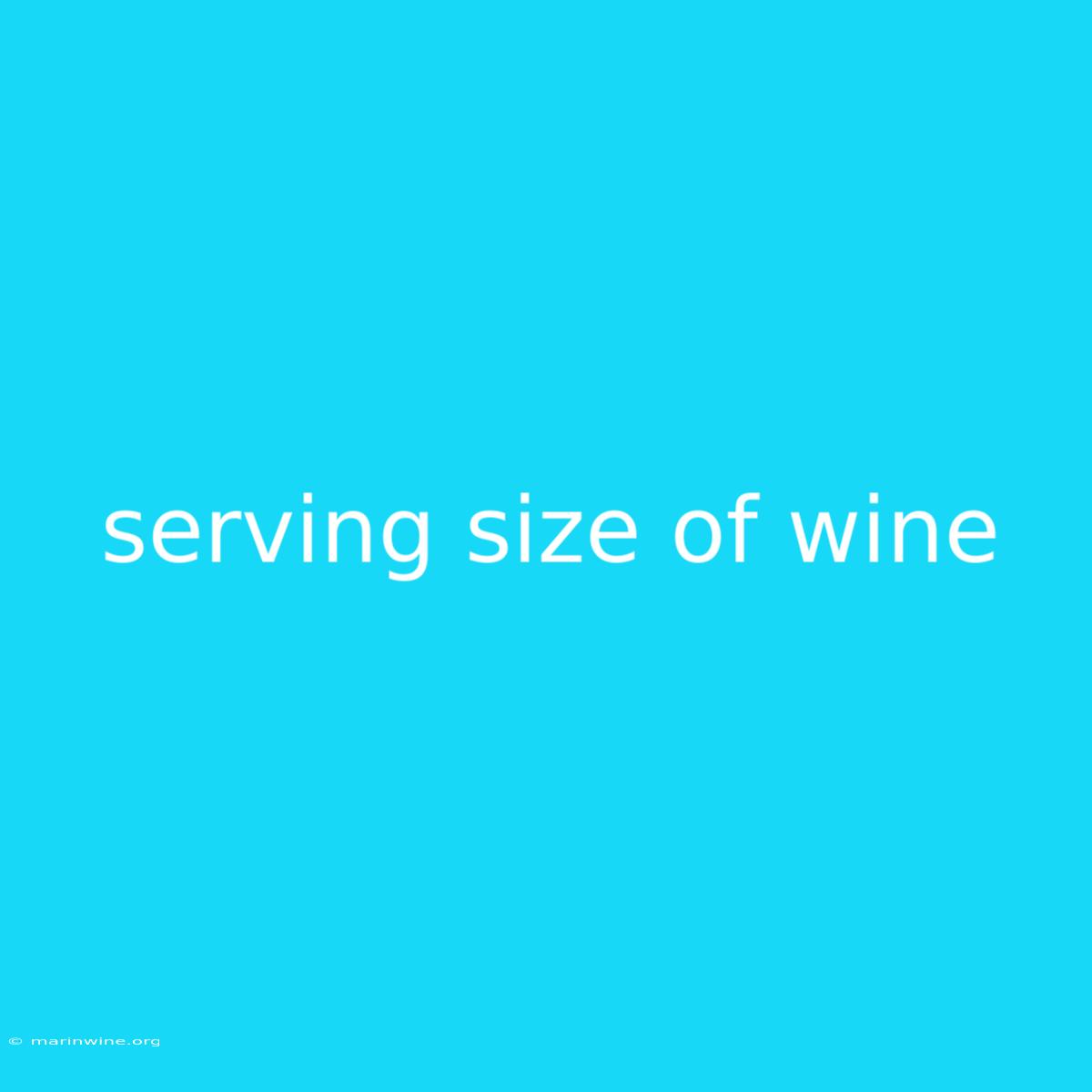What's a "Serving" of Wine, Anyway? Uncorking the Truth About Serving Sizes
Have you ever wondered what constitutes a "serving" of wine? It's a question that often gets overlooked, but it's actually quite important when it comes to enjoying wine responsibly and staying within your desired calorie intake.
Why It Matters: Understanding serving sizes is crucial for making informed choices about your alcohol consumption. This article will delve into the nuances of wine servings, debunking common misconceptions and providing insights into how to enjoy wine responsibly.
Key Takeaways of Serving Size
| Key Takeaway | Description |
|---|---|
| Standard Serving: A standard serving of wine is typically 5 ounces (148 ml). | |
| Glass Size: The size of the glass can significantly impact how much wine you consume. | |
| Alcohol Content: The alcohol content of wine varies, impacting the overall serving size. | |
| Calorie Count: Serving size directly influences calorie intake from wine. |
Now, let's explore the complexities of serving size in greater detail:
What is a Serving of Wine?
The standard serving size for wine is 5 ounces (148 ml). This measurement is based on guidelines from the National Institute on Alcohol Abuse and Alcoholism (NIAAA) and the Dietary Guidelines for Americans.
Serving Size vs. Glass Size
The size of the glass you use can significantly influence how much wine you drink. A standard wine glass typically holds around 9-10 ounces, making it easy to consume more than a single serving. While this may seem like a small difference, it can add up quickly.
Alcohol Content Matters
The alcohol content of wine can vary significantly. Wine with a higher alcohol content, like some reds, will have a lower "serving" size based on alcohol units, even though it may be the same amount of liquid.
Key Considerations for Wine Serving Sizes
Wine and Calories
The number of calories in a serving of wine can range depending on the alcohol content, sweetness, and type of wine. For example, a 5-ounce serving of dry red wine typically contains about 125 calories, while a sweet white wine can have up to 175 calories.
Alcohol Units
Alcohol units are a measure of the amount of alcohol in a drink. One standard serving of wine is equal to one alcohol unit.
FAQ
Q: Can I drink more than one serving of wine?
A: There are no hard and fast rules when it comes to drinking wine, but it's best to be mindful of your intake and drink responsibly.
Q: What is a good way to measure a serving of wine?
A: You can use a measuring cup or a wine glass with markings to help you accurately measure a serving.
Q: Are there any health benefits to drinking wine?
A: Some studies suggest that moderate wine consumption may have some health benefits, but it's important to note that this is a complex topic and more research is needed.
Q: What are some tips for drinking wine responsibly?
A: Some tips for drinking wine responsibly include:
- Pace yourself: Take breaks between drinks and drink water throughout the evening.
- Eat while you drink: Food can help slow down the absorption of alcohol.
- Be aware of your limits: Know your limits and don't drink more than you can handle.
- Choose wisely: Opt for lower alcohol content wines and avoid sugary drinks.
Tips for Serving Wine
- Use a smaller glass: A smaller wine glass will help you control your portion sizes.
- Offer a variety of wines: This can help encourage guests to pace themselves and try different options.
- Provide food pairings: Food can help enhance the flavors of wine and slow down the absorption of alcohol.
Summary by Serving Size
This article explored the complexities of serving size for wine, emphasizing the importance of mindful consumption. We learned that a standard serving size is 5 ounces, but the actual amount of wine consumed can vary depending on factors like glass size and alcohol content.
Closing Message: Knowing your serving size is crucial for making informed choices about your alcohol consumption. Enjoy wine responsibly and savor each sip!

